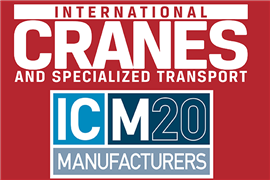Technical Features: Golden Ears Bridge
09 February 2009
The main river bridge concept for the Golden Ears project is an adaptation of the Alex Fraser cable-stayed bridge, designed by Buckland & Taylor Ltd.
The Alex Fraser, completed in the 1980s, spans the Fraser River west of the Golden Ears crossing, and connects the municipalities of Richmond and New Westminster (on the north shore) with the municipality of Delta.
When it opened in 1986, the Alex Fraser was the longest cable-stayed bridge in the world. In 2005, Golden Crossing Constructors used their international experience in bridge construction to update the Alex Fraser concept, creating a much lower-profile bridge design.
Improvements in design have allowed for more rapid and more accurate assembly of steel and construction of the cable anchorages. Quick assembly was essential given the three year timetable for construction of the main bridge plus approaches and associated road network.
The main bridge deck framing system, made of a composite of materials, is very light, reducing the seismic load on the substructure and foundations.
One substantial technical challenge in this project was to develop a foundation design that will allow for timely and cost-effective construction in the deep layers of soft silt of the Fraser River.
The design selected made use of large-diameter bored piles. These are new to British Columbia, but were previously used by engineers from the project team on the My Thuan Bridge in Vietnam.
The construction process required to sink these piles required a minimum of specialized equipment compared with more conventional methods, and it had less impact on the marine environment. The piles, 12 at each of the four in-river piers, for a total of 48, were sunk to an average of 90 m below the Fraser River.
© 2007 The Golden Ears Bridge
STAY CONNECTED


Receive the information you need when you need it through our world-leading magazines, newsletters and daily briefings.
CONNECT WITH THE TEAM










